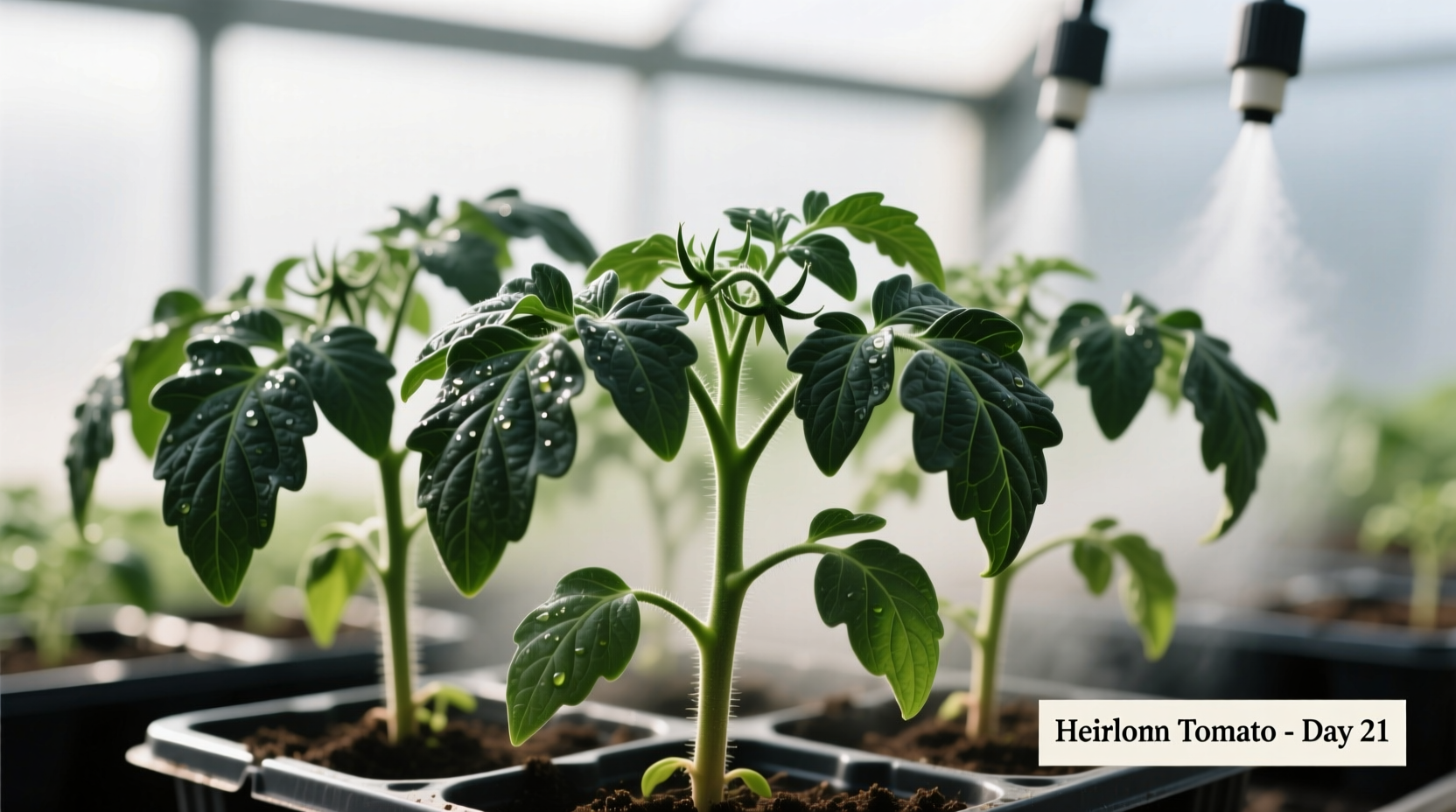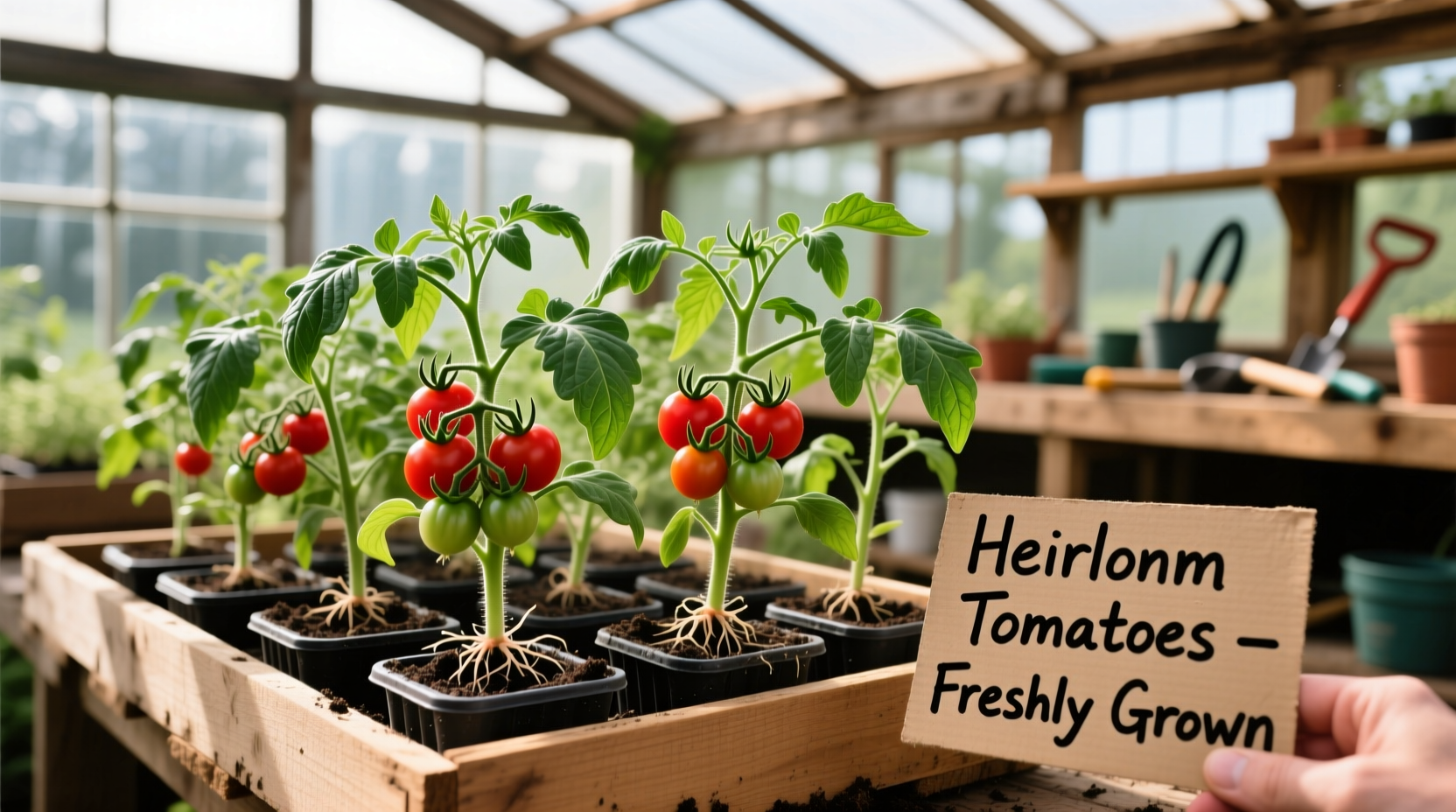Understanding Tomato Transplants: Your First Step to Garden Success
Tomato transplants—also called seedlings or starter plants—are young tomato plants ready for garden planting. Unlike growing from seeds, transplants give you a 4-6 week head start, crucial for regions with shorter growing seasons. The USDA Plant Hardiness Zone Map confirms that proper transplant timing varies significantly by region, making informed purchasing essential.
What Makes a Quality Tomato Transplant?
Not all transplants deliver equal results. Healthy specimens show these key characteristics:
- Stem thickness: At least pencil-width with slight woodiness
- Leaf color: Vibrant medium-to-dark green (yellowing indicates nutrient deficiency)
- Root development: White, fibrous roots visible at drainage holes without circling
- Height-to-width ratio: Compact growth (8-12 inches tall) rather than leggy stems
Avoid plants with flowers or fruit already set—these divert energy from root establishment. The University of Minnesota Extension confirms that prematurely flowering transplants often produce 20-30% fewer fruits due to stress during establishment.
| Quality Indicator | Healthy Transplant | Problematic Transplant |
|---|---|---|
| Stem | Firm, slightly woody base | Thin, flexible, or cracked |
| Leaves | Uniform green, no spots | Yellowing, curling, or spots |
| Roots | White, spreading outward | Circling, brown, or mushy |
| Growth Habit | Compact, bushy appearance | Tall, spindly stems |
Timing Your Purchase for Maximum Yield
The optimal window for buying tomato transplants depends on your last frost date. Consult the USDA Plant Hardiness Zone Map to determine your zone-specific timeline:
6-8 weeks before last frost: Start looking for early varieties at local nurseries
2-4 weeks before last frost: Main purchasing window for most varieties
After last frost date: Transplants should be hardened off and ready for planting
Purchasing too early risks exposing plants to frost damage, while waiting too long forces plants into root-bound stress. The Oregon State University Extension reports that transplants held longer than 8 weeks in containers experience 40% reduced yield potential due to root constriction.
Where to Find Reliable Tomato Transplants
Your sourcing location significantly impacts plant health and productivity:
Local Nurseries and Garden Centers
These typically carry regionally adapted varieties and staff with local growing knowledge. Look for nurseries that grow their own transplants—these usually receive better care than mass-produced imports. The National Gardening Association found that locally grown transplants establish 25% faster than those shipped from distant greenhouses.
Farmer's Markets and Cooperative Extensions
Many agricultural extensions run plant sales featuring disease-resistant varieties tested for your area. These often include Master Gardener consultations—free expert advice with your purchase.
Avoid Big-Box Store Pitfalls
While convenient, large retailers often prioritize appearance over plant health. Their transplants may:
- Be grown in overcrowded conditions
- Lack proper hardening off
- Carry undetected pests or diseases

Proper Care After Purchase: The Critical First 72 Hours
How you handle transplants immediately after purchase determines their success:
- Hardening off: If plants haven't been acclimated, gradually expose them to outdoor conditions over 7 days
- Planting depth: Bury stems up to first set of leaves to encourage additional root growth
- Watering schedule: Keep soil consistently moist (not soggy) for first 2 weeks
- Fertilizing: Wait 10-14 days before applying balanced fertilizer
The Penn State Extension emphasizes that improper planting depth accounts for 35% of transplant failures—burying too shallow prevents adequate root development while planting too deep can cause stem rot.
Common Mistakes That Doom Your Tomato Harvest
Avoid these critical errors when purchasing and planting tomato transplants:
- Buying flowering plants: Energy diverted to flowers reduces root establishment
- Ignoring disease resistance codes: Look for VFN (verticillium, fusarium, nematode resistance)
- Planting too early: Night temperatures below 50°F stunt growth permanently
- Overcrowding: Space plants at least 24-36 inches apart for proper air circulation
Regional limitations matter significantly—what works in California fails in Maine. The Old Farmer's Almanac documents that northern gardeners achieve best results with determinate varieties (like 'Celebrity'), while southern growers succeed with indeterminate types (like 'Better Boy').
When NOT to Buy Tomato Transplants
Recognize these red flags that indicate poor-quality transplants:
- Plants with visible pests (aphids, whiteflies)
- Yellowing between leaf veins (iron deficiency)
- Roots emerging from container bottom
- Excessive flowering or fruit set
- Water-soaked spots on leaves (possible fungal infection)
Purchasing compromised plants saves little money but costs significantly in lost harvest. The University of Illinois Extension estimates that replacing failed transplants costs gardeners 2-3 times more in time and resources than purchasing quality plants initially.
When is the best time to buy tomato transplants?
Purchase tomato transplants 2-4 weeks before your last expected frost date. This timing allows plants to establish roots before summer heat while avoiding frost damage. Check your USDA hardiness zone for precise timing—most gardeners buy transplants between mid-April and mid-May depending on location.
How can I tell if a tomato transplant is healthy?
Healthy tomato transplants have dark green leaves, pencil-thick stems, white fibrous roots visible at drainage holes, and compact growth (8-12 inches tall). Avoid plants with yellowing leaves, thin stems, circling roots, or premature flowers/fruit which indicate stress and reduced yield potential.
Should I buy organic tomato transplants?
Organic transplants ensure no synthetic pesticides were used during growth, which matters if you maintain an organic garden. However, the most critical factor is plant health—sometimes conventionally grown transplants from reputable sources show better vigor. Check with sellers about their growing practices if organic matters to your gardening approach.
How soon after buying should I plant tomato transplants?
Plant transplants within 24-48 hours of purchase if possible. If immediate planting isn't feasible, keep them in a shaded area with consistent moisture. Never leave transplants in a hot vehicle or exposed to direct sun for extended periods, as this causes irreversible stress that reduces yield potential by up to 25%.











 浙公网安备
33010002000092号
浙公网安备
33010002000092号 浙B2-20120091-4
浙B2-20120091-4